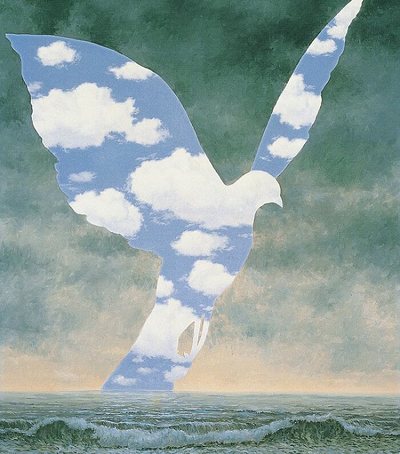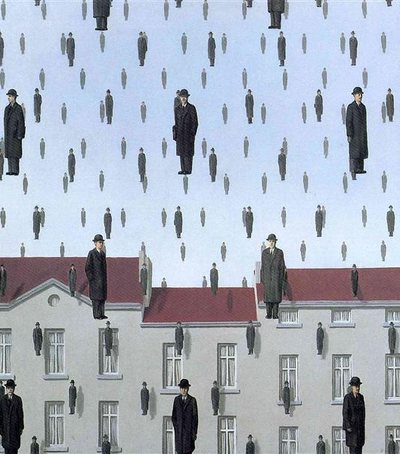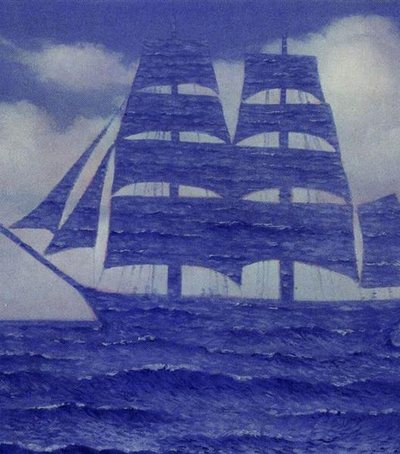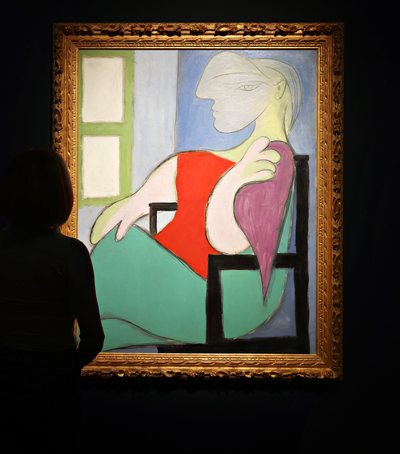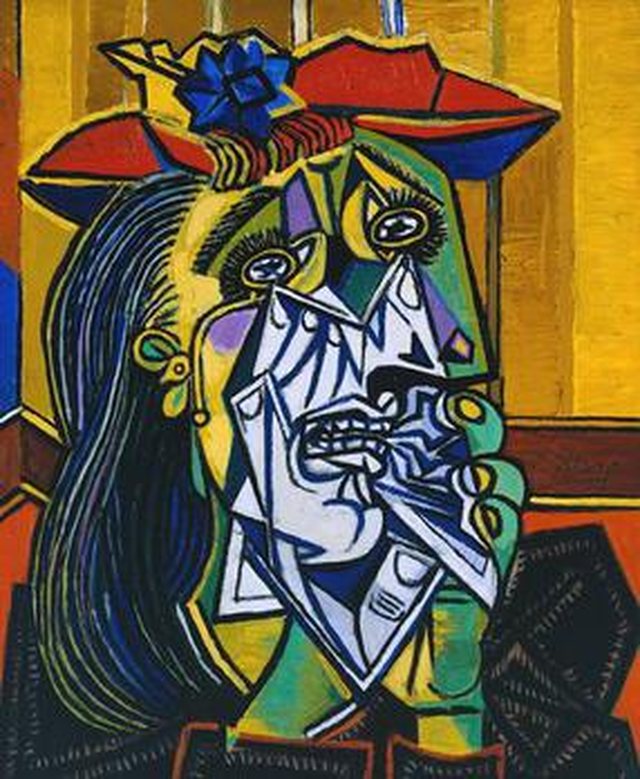
The “Weeping Woman” series is considered a thematic continuation of the tragedy depicted in Picasso’s epic painting, Guernica. By focusing on the image of a weeping woman, the artist was no longer directly depicting the effects of the Spanish Civil War, but was instead referring to a universal image of pain and suffering.
Picasso's insistence that we imagine ourselves in this woman's disfigured face, in her dark eyes, was part of his response to the photographs he was seeing in newspapers of the Luftwaffe bombing Guernica. "The Weeping Woman" was the latest in a series of paintings, etchings, and drawings that Picasso produced as a form of protest.
In May 1937, Picasso’s mother wrote to him from Barcelona that the smoke from the city burning during the fighting had made her eyes water. The Mater Dolorosa, the Weeping Virgin, is a traditional image in Spanish art, often represented in fiery Baroque sculptures with glass tears – like these solid tears flowing down this woman’s right ear. Picasso’s father, an artist himself, had made one for the family home.
The model for this painting – and for the entire series – was Dora Maar, who was working as a professional photographer when Picasso met her in 1936. She was the only photographer allowed to document the successive stages of Guernica while Picasso was painting it in 1937.
Dora Maar was Picasso’s lover from 1936 to 1944. During their relationship, he painted her in a variety of guises – some realistic, some loving, and others torturous and menacing. Picasso explained:
“For me, she is the Weeping Woman. For years I painted her in tortured forms – not out of sadism, not out of pleasure – I was simply obeying a vision that was imposed on me. It was the deep reality, not the superficial one.”
Photo Credits: https://media.tate.org.uk/art/images/work/T/T05/T05010_10.jpg

